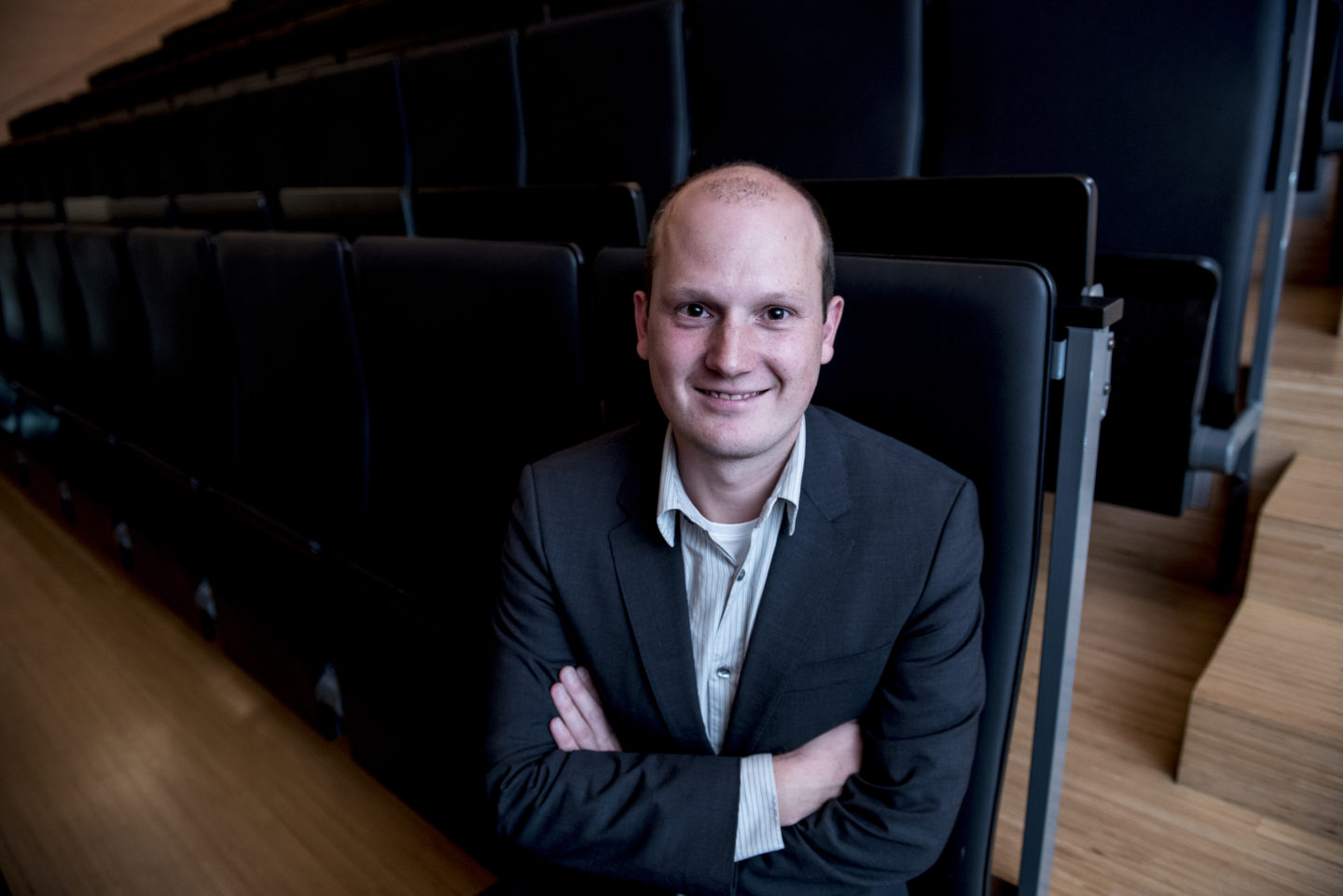
Stefan Huber was at IST Austria from 2013 to 2015 as a postdoc in the Edelsbrunner Group. He is now a researcher at Bernecker + Rainer in industrial R&D. In his interview, he talks about his research but also about his career and about his time at IST Austria.
Stefan Huber, Research and Development
I designed the software concept that means the algorithms, the mathematical models for the next generation industrial transport system of B&R which is called ACOBOStrak.
The coolest thing I think is: It is a very interdisciplinary project. There are bright people from control theory, from mathematics, computer science and together we shape a new kind of technology that could actually change the way industrial machines are built in the future.
I believe that the current R&D project I am working on kind of demonstrates how computer science has a deep impact on industrial automatization. I think this is only a start so in the future I would like to shape a stronger group in the company that focuses on computer science algorithms and mathematics.
My academic background is actually algorithms more precisely it is computational geometry and topology so I have a double degree in computer science and mathematics. I studied in Salzburg I did my PhD in computational geometry and then for a short time I was a senior scientist at the math department. After that I joined Herbert Edelsbrunner’s group at IST Austria for two years in computational topology.
To me IST Austria was intellectually very inspiring. So looking back at IST I see that the experiences that I gained at IST gave me a lot of confidence and trust in scientific principles and that again has an influence in my work because I know that I can trust on scientific methodologies to solve the problems I face in my industry job.
First actively participate in intellectual exchanges.
Try to go to as many workshops and conferences as you can do.
And third use the freedom and opportunities you get from IST Austria. In my case I wasn’t forced to pursue a particular direction in my research. So that’s a nice thing you are completely open. They are very generous when it comes to visiting conferences and there are a lot of scientific visitors to get in touch and to have discussions after a talk when drinking a glass of wine or going to Heurigen.
What I really loved was when there were big visitors like Steve Smale and we went to Heurigen for dinner in the evening and the kind of talks that developed at an evening event are quite different and I enjoyed that very much.